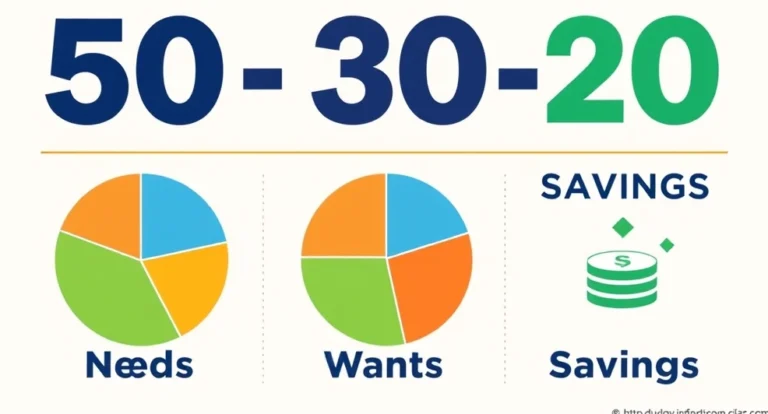The Ultimate Budgeting Guide for Beginners Who Want Financial Freedom
Achieving financial freedom might sound like a far-off dream, but the truth is, it’s closer than you think. The key to unlocking it? Budgeting. A solid budget gives you power over your money instead of letting your money control you. It’s how you ensure you’re spending intentionally, saving wisely, and working toward those big dreams and goals. If you’re new to budgeting, don’t worry—we’ve got you covered. This guide will walk you through the basics of budgeting and give you practical, no-nonsense tips to start making progress today.
Why Budgeting is the Key to Financial Freedom
At its core, budgeting is about creating a plan for your money. It’s how you see exactly where your dollars are going and make sure they’re working in your favor. Without a budget, it’s easy to overspend, live paycheck to paycheck, or lose sight of long-term goals.
Think of your budget as a roadmap. It tells you how to get from where you are today to financial security. Want to pay off debt? Save for a house? Travel the world? Budgeting helps make those dreams attainable.
Step 1: Know Your Why
Before you start crunching numbers, ask yourself why you want to budget. Is it to reduce financial stress? Build an emergency fund? Retire early? Having a clear motivation will keep you committed. Write it down. Put a sticky note on your mirror or a reminder on your phone—anything that’ll inspire you to keep going when the process feels difficult.
Step 2: Assess Your Current Financial Situation
You can’t create an effective budget without knowing where you stand. Start by gathering these details:
- Your Income: Write down all sources of money coming in each month, including paychecks, side hustles, or any other streams of income.
- Your Expenses: Track where your money goes. Look at bank statements or use an app to categorize your spending (housing, groceries, dining out, subscriptions, etc.).
- Your Debts and Savings: Note any outstanding debts (student loans, credit cards) and account balances (checking, savings, retirement accounts).
The goal here isn’t to judge yourself—it’s simply about building awareness.
Step 3: Create Your First Budget
Now that you have a clear view of your financial picture, it’s time to draft a budget. Here’s a simple method for beginners:
Use the 50/30/20 Rule
This rule gives you a clear starting point:
- 50% for Needs: This covers essentials like rent/mortgage, utilities, transportation, groceries, and insurance.
- 30% for Wants: Allocate this portion to non-essentials, like dining out, hobbies, entertainment, and shopping.
- 20% for Savings and Debt: Use this for saving, building an emergency fund, and tackling debt.
Adjust the percentages based on your lifestyle, but make sure saving and debt repayment remain a top priority.
Step 4: Track Every Dollar
Your budget’s success depends on your ability to follow it—and that means tracking your spending. Use whatever method works best for you:
- Spreadsheets: Create a simple Excel or Google Sheets file to log expenses.
- Budgeting Apps: Apps like Mint, YNAB (You Need A Budget), or EveryDollar automatically categorize transactions.
- Pen and Paper: If you prefer old-school tracking, write it all down in a journal.
The key is to review regularly—weekly works well—to ensure you stay on track. If you overspend in one category, adjust another to make up for it.
Step 5: Save Like a Pro
Saving isn’t just about holding onto cash—it’s about preparing for the future. Here’s how to build a strong habit of saving:
- Automate It
Set up automatic transfers to your savings account. Treat it like a non-negotiable bill, so you don’t even miss the money. - Start Small
If saving feels overwhelming, begin with a manageable amount—like $10, $20, or 1% of each paycheck—and gradually increase it over time. - Create Specific Goals
Saving is easier when you’re working toward something tangible, like a $1,000 emergency fund, a vacation, or a down payment. Break big goals into smaller milestones and celebrate when you hit them.
Step 6: Plan for the Unexpected
Life is full of surprises—good and bad. An emergency fund is your safety net when things don’t go as planned. Aim to save three to six months’ worth of essential expenses. If that seems daunting, start with $500 or $1,000—whatever feels achievable—and build from there.
Step 7: Stay Motivated and Overcome Challenges
Budgeting isn’t always smooth sailing. Here’s how to stay on track when things get tough:
- Set Reminders of Your Goals
Put pictures, quotes, or vision boards somewhere you’ll see them daily. They’ll remind you of what you’re working toward. - Reward Yourself
Celebrate wins along the way. Paid off your first credit card? Treat yourself within reason—your progress deserves recognition. - Expect Slip-Ups
Missed your budget one month? It’s okay—just reassess and get back on track. Progress is more important than perfection.
Common Budgeting Mistakes (and How to Avoid Them)
- Not Tracking Expenses
If you don’t track your spending, you can’t fix leaks. Stay consistent with your tracking system. - Being Too Strict
Cutting out every luxury is a recipe for burnout. Allow some wiggle room for the things you enjoy. - Ignoring Irregular Expenses
Remember to account for non-monthly costs like annual subscriptions, car maintenance, or holiday gifts. Divide these expenses into monthly amounts and save ahead of time. - Quitting Too Soon
Budgeting is a long-term habit. Even if it feels awkward at first, stick with it—it gets easier.
Budgeting Tools and Resources
Here are some resources to make budgeting simpler:
- Budgeting Apps
Explore tools such as Mint or YNAB to streamline your efforts. - Online Calculators
Try debt payoff or savings calculators to create realistic goals. - Books on Personal Finance
Books like The Total Money Makeover by Dave Ramsey or Your Money or Your Life by Vicki Robin offer inspiration and strategies.
Wrap-Up: Take Control of Your Financial Future
Budgeting isn’t about restriction—it’s about freedom. It empowers you to live intentionally, spend on the things that matter, and build a brighter future. By starting with small, manageable steps, you’ll build momentum and confidence over time.
Remember, your financial freedom is within reach. The most important thing you can do today is take that first step. Start tracking, planning, and saving now—and watch your financial life transform. The road to financial freedom might take time, but with a budget in hand, you’re already on your way.







